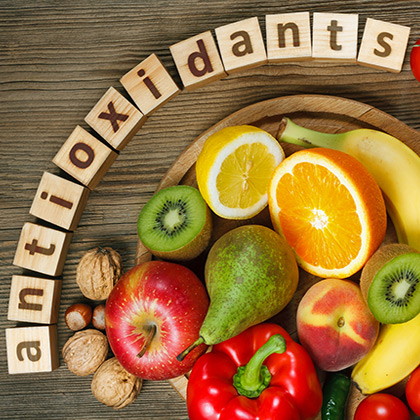
You might already know some healthy reasons to take omega 3 fatty acids. How they lower your risk of heart disease, for example, and reduce arthritis inflammation, lupus or period pain. But did you know omega 3s may also benefit your eyesight?
Omega 3s are a polyunsaturated fatty acid. There are three main types – alpha-linolenic acid (ALA), eicosapentaenoic acid (EPA) and docosahexaenoic acid (DHA). ALA is classed as an essential fatty acid because your body can’t make it. The body can only get it from your diet.
EPA and DHA are the most interesting though, where health is concerned. These are found in oily fish, shellfish, and marine algae.
According to the British Dietetic Association, people with a diet rich in omega 3s like the Mediterranean, Japan, and Greenland have a lower risk of heart disease than Western countries, such as the UK.i It may be why so many health experts are urging people to eat more omega 3-rich foods.
However, there isn’t an ideal amount of omega 3s that we should be eating. Government guidelines recommend adults should eat at least two portions of fish a week, one of which should be oily fish.
Fish oils and your eyes
Omega 3s are found in every cell in the human body. High amounts of DHA are found in the part of the eye called the retina (the layer of tissue in the eye that receives the image formed by the lens). This may explain why evidence shows DHA keeps the retina healthy.
 And even though EPA isn’t found in the eye, it’s still important because it helps the body produce DHA.
And even though EPA isn’t found in the eye, it’s still important because it helps the body produce DHA.
Macular degeneration
Low levels of DHA and EPA have been associated with AMD.ii This condition develops when part of the retina (the macula) becomes damaged, which can affect your ability to see fine detail and, if left untreated, can destroy your central vision.
Several studies have looked at whether omega 3s prevent or slow the progression of AMD. In 2008, researchers found eating oily fish at least once a week may halve your odds for developing neovascular (or wet) AMD (the type of AMD that can develop quickly, as opposed to the more common dry AMD).iii
The following year, a study by the US National Eye Institute used information from the Age-Related Eye Disease Study (AREDS) who were 30 per cent less likely to develop AMD during a 12-year period were people with the highest omega 3 in their diets.
Though omega 3s weren’t included in the nutrients trialled in AREDS, it was included in the follow-up study, AREDS2. In this study, researchers gave participants EPA and DHA along with other nutrients like lutein, zeaxanthin and zinc. Results also suggest this combination of nutrients may slow the progression of advanced AMD.iv
Scientists looked at the subject again in 2010, and found that eating fish and shellfish may protect against advanced AMD.v Then again in 2011 a study – this time in women only – found eating DHA, EPA and fish on a regular basis was associated with a significantly decreased risk of AMD.vi The same study also discovered omega 3s and fish may help prevent the development of AMD.
Glaucoma
Evidence that eating omega 3s may reduce the risk of developing glaucoma has also been found. A 2018 study published in the journal JAMA Opthalmology found eating more EPA and DHA daily was associated with lower levels of glaucoma.vii
The researchers studied questionnaires from almost 4,000 people aged 40 or older. Those who had lower intakes of EPA and DHA had higher levels of glaucoma, they found.
Glaucoma occurs when your optic nerve becomes damaged by raised pressure in the eye (called: intraocular pressure). However, scientists writing in the journal Transitional Vision Science & Technology claim that taking omega 3 supplements may help reduce intraocular pressure, which suggests they may help prevent and/or treat glaucoma.
Diabetic retinopathy
Low levels of EPA and DHA have also been linked with a condition called diabetic retinopathy, says the American Optometric Association. Diabetic retinopathy is an eye condition affecting people with diabetes. The longer you have diabetes, the greater your risk of developing diabetic retinopathy, which affects the blood flow in the retina.viii
However in one study, published in the journal JAMA Opthalmology in 2016, found people with diabetes who regularly ate 500mg of omega-3-rich fish – that’s around two servings a week – were 46 per cent less likely to develop diabetic retinopathy than those who ate less fish. It was suggested that the reduced risk was because of lower inflammation levels.
Dry eye syndrome
Omega 3s have also been found to reduce the risk of dry eyes. One study – which included more than 32,000 women from the Women’s Health Study published in 2005 – found those eating the most omega 3s from fish were 17 per cent less likely to develop dry eyes compared with those who ate less or no fish or seafood.ix
More recently, experts from the International Journal of Opthalmology evaluated the role of omega 3s in dry eye syndrome, and concluded they “have a definite role for dry eye syndrome.”x
A few years later, a report appeared in the journal Contact Lens & Anterior Eye, stating daily omega 3 supplements could help relieve dry eyes associated with computer use. The study involved computer users who complained of dry eyes and who used a computer for more than three hours a day.xi
Not all studies have proved positive for omega 3s and dry eye syndrome, however, with a well publicised 2018 trial funded by the US National Eye Institute suggesting they’re no better than placebo.xii
How to boost your omega 3 intake
Having a diet high in omega 3s may be a top way to prevent vision problems. If you like fish, some of the richest sources are mackerel, salmon, herring, sardines, and fresh – not tinned – tuna.
If you’re not a fish lover, there are many fish oil supplements you can try. Fish oil supplements vary widely in the amount of EPA and DHA they contain, however, so it’s a good idea to choose a high-strength formulation. Omega 3s are also found in cod liver oil supplements.
Vegetarians and vegans can boost their intake of ALA – which the body converts into EPA and DHA – by eating plant-based foods such as flaxseeds (including flaxseed oil supplements), walnuts, peanut butter, pumpkin seeds, chia seeds, certain plant oils (canola and soybean oils, for example); and green leafy vegetables like kale, spinach, and broccoli. However, most experts agree that EPA and DHA converted from ALA isn’t as well processed by the body as the omega 3s found in fish.
You can also find some foods fortified with omega 3s, including some brands of eggs, milk, yoghurt, bread, and spreads.
For more information on how your diet can help keep your eyesight healthy, read our article Healthy eyes: dietary considerations to improve your vision.
Meanwhile, there’s lots more information about natural supplements for eye health as well as tips on how to keep your eyes healthy in our other Vision Health Hub articles.
References:
-
Lanigan, J. (2017). Food Fact Sheet. The Association of UK Dietitians. Available online: https://www.bda.uk.com/foodfacts/omega3.pdf
-
Augood, C., et al. (2008). Oily fish consumption, dietary docosahexaenoic acid and eicosapentaenoic acid intakes, and associations with neovascular age-related macular degeneration. Am J Clin Nutr. Aug;88(2):398-406. Available online: https://www.ncbi.nlm.nih.gov/pubmed/18689376
-
AREDS Research Group. ω–3 Long-chain polyunsaturated fatty acid intake and 12-y incidence of neovascular age-related macular degeneration and central geographic atrophy: AREDS report 30, a prospective cohort study from the Age-Related Eye Disease Study. The American Journal of Clinical Nutrition Volume 90, Issue 6, 1 December 2009, Pages 1601–1607. Available online: https://academic.oup.com/ajcn/article/90/6/1601/4598106
-
AREDS2 Research Group, Chew, E.Y., Clemons, T., et al. (2012). The Age-Related Eye Disease Study 2 (AREDS2): study design and baseline characteristics (AREDS2 report number 1). Ophthalmology. 119(11):2282-2289. Available online: https://www.ncbi.nlm.nih.gov/pmc/articles/PMC3485447
-
Swenor, B.K., et al. (2010). The Impact of Fish and Shellfish Consumption on Age-Related Macular Degeneration. Volume 117, Issue 12, Pages 2395–2401. Available online: https://www.aaojournal.org/article/S0161-6420(10)00377-5/abstract
-
Christen, W.G., et al. Dietary ω-3 Fatty Acid and Fish Intake and Incident Age-related Macular Degeneration in Women. Arch Ophthalmol. 2011 Jul. 129(7): 921–929.. Available online: https://www.ncbi.nlm.nih.gov/pmc/articles/PMC3134638
-
Downie, L.E., Vingrys, A.J. (2018). Oral Omega-3 Supplementation Lowers Intraocular Pressure in Normotensive Adults. Transl Vis Sci Technol. Available online: https://www.ncbi.nlm.nih.gov/pmc/articles/PMC5931260
-
Sala-Vila, A., et al. (2016). Dietary Marine ω-3 Fatty Acids and Incident Sight-Threatening Retinopathy in Middle-Aged and Older Individuals With Type 2 Diabetes. JAMA Ophthalmol. 134(10):1142-1149. Available online: https://jamanetwork.com/journals/jamaophthalmology/fullarticle/2543478
-
Miljanovic, B., et al. (2005). Relation between dietary n−3 and n−6 fatty acids and clinically diagnosed dry eye syndrome in women. The American Journal of Clinical Nutrition, Volume 82, Issue 4, Pages 887–893. Available online: https://academic.oup.com/ajcn/article/82/4/887/4607578
-
Bhargava, R., et al. (2013). A randomized controlled trial of omega-3 fatty acids in dry eye syndrome. Int J Ophthalmol. 6(6): 811–816. Available online: https://www.ncbi.nlm.nih.gov/pmc/articles/PMC3874521
-
Bhargava, R., et al. (2013). Oral omega-3 fatty acids treatment in computer vision syndrome related dry eye. Int J Cont Lens Anterior Eye. Jun;38(3):206-10. Available online: https://www.ncbi.nlm.nih.gov/pubmed/25697893
Related Posts?
Disclaimer: The information presented by Nature's Best is for informational purposes only. It is based on scientific studies (human, animal, or in vitro), clinical experience, or traditional usage as cited in each article. The results reported may not necessarily occur in all individuals. Self-treatment is not recommended for life-threatening conditions that require medical treatment under a doctor's care. For many of the conditions discussed, treatment with prescription or over the counter medication is also available. Consult your doctor, practitioner, and/or pharmacist for any health problem and before using any supplements or before making any changes in prescribed medications.

Christine
Christine Morgan has been a freelance health and wellbeing journalist for almost 20 years, having written for numerous publications including the Daily Mirror, S Magazine, Top Sante, Healthy, Woman & Home, Zest, Allergy, Healthy Times and Pregnancy & Birth; she has also edited several titles such as Women’ Health, Shine’s Real Health & Beauty and All About Health.
View More



